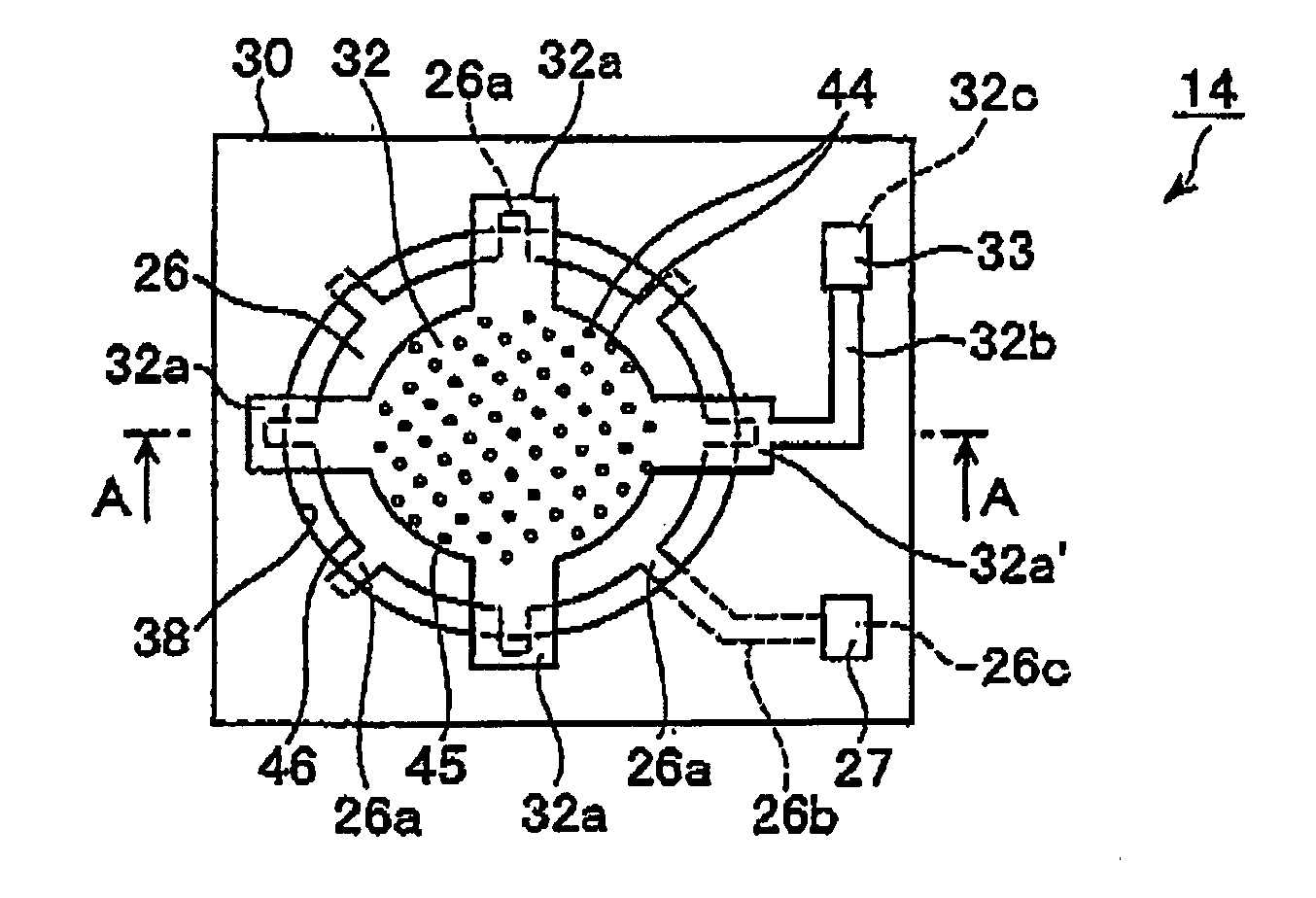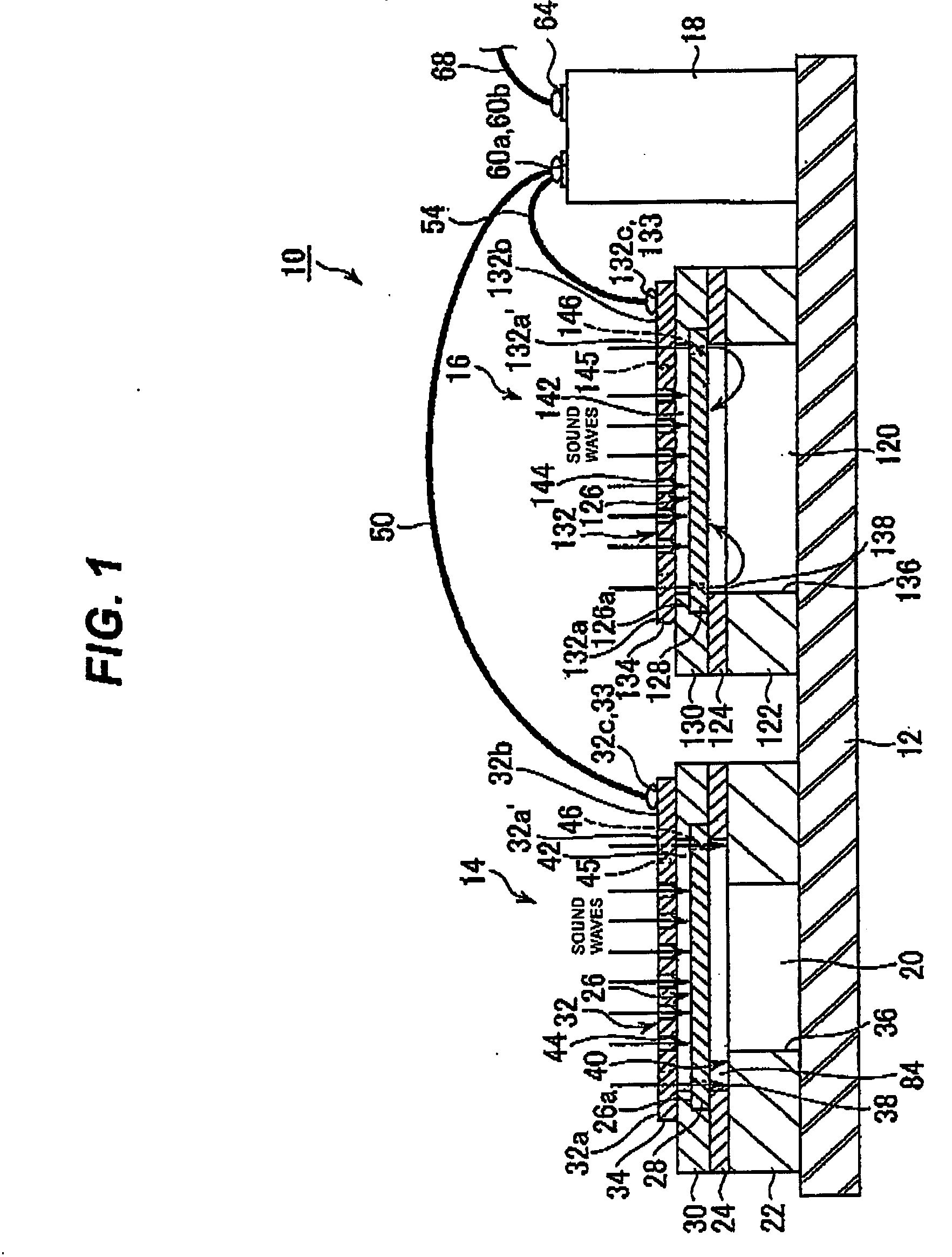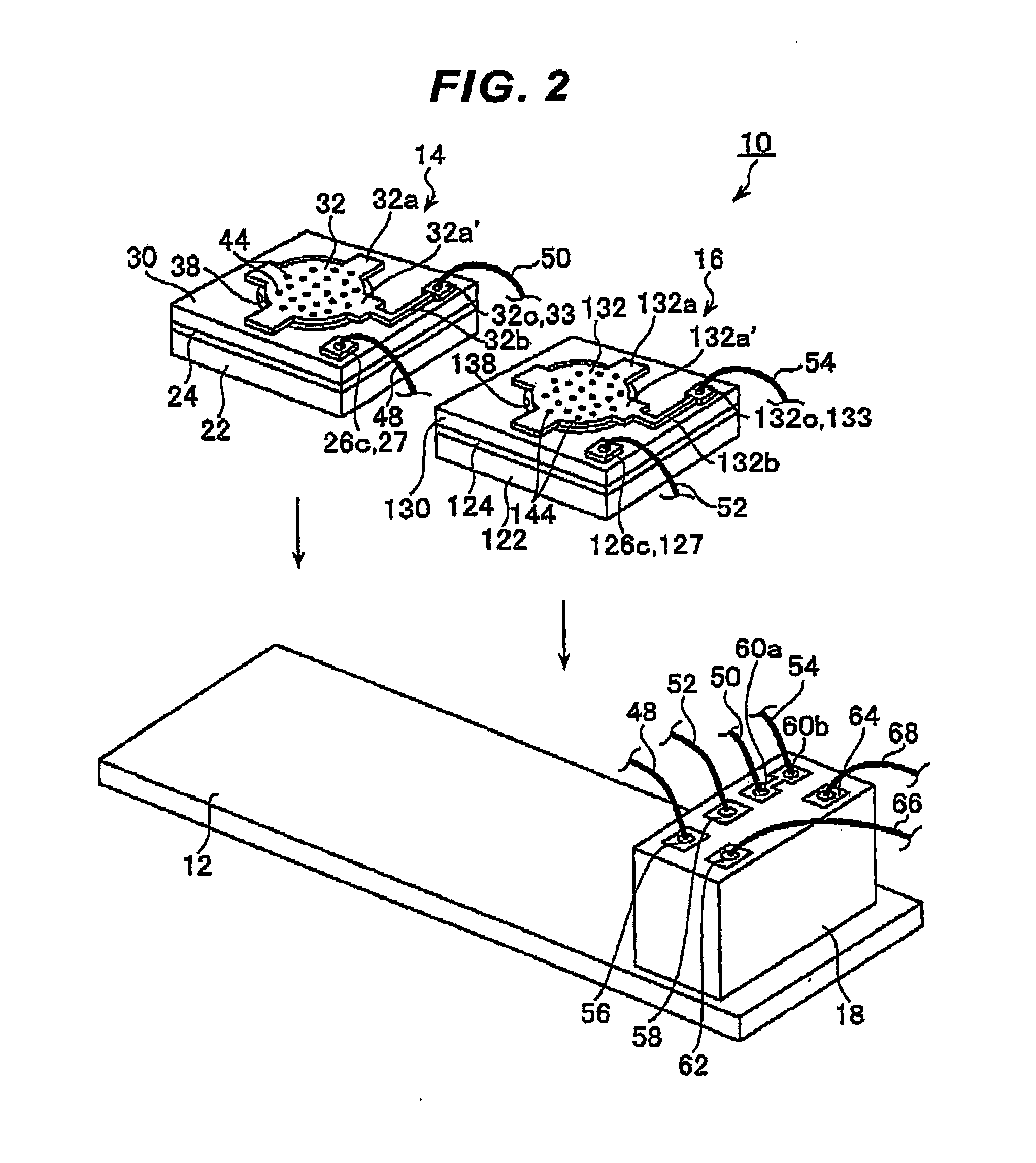Condenser microphone
a condenser microphone and microphone technology, applied in the field of condenser microphones, can solve the problems of increasing the number of steps, generating (or picking up) unnecessary impact sound of the microphone, and raising the cost of manufacturing, so as to reduce the impact sound
- Summary
- Abstract
- Description
- Claims
- Application Information
AI Technical Summary
Benefits of technology
Problems solved by technology
Method used
Image
Examples
first embodiment
[0057]FIG. 1 is a cross sectional view of a condenser microphone 10 cut in a longitudinal direction according to the present invention. FIG. 2 is a decomposition perspective view of the condenser microphone 10.
[0058]As shown in FIG. 1, the condenser microphone 10 consists of a is device substrate 12 on which a condenser microphone element (a first condenser type element) 14, an acceleration sensor element (a second condenser type element) 16 and a LSI18 for impedance conversion are mounted by mutually being insulated with each another and fixed with adhesive. Both of the condenser type elements 14 and 16 are composed of condenser-typed elements and are positioned on the substrate 12 with the same surfaces facing a same direction. Opening ends of back cavities 20 and 120 of both elements 14 and 16 are sealed with the substrate 12. Both elements 14 and 16 are composed of the same measurement other than a diameter of opening parts 36 and 136 (explained later) composing main parts of th...
third embodiment
[0127]A terminal 329 for the diaphragm and a terminal 266 of a LSI 259 for impedance conversion on the condenser microphone element 214 are connected to each other by soldering a lead wire 270. A terminal 331 for the back plate and a terminal 268 of the LSI 259 for impedance conversion on the condenser microphone element 214 are connected to each other by soldering a lead wire 272. Lead wires 278 and 280 are respectively connected to terminals 274 and 276 of the LSI259 for impedance conversion. As described in the above, the circuit structure will be same as that in FIG. 15 showing the
[0128]Operations when sound waves by a sound from outside is input to the apparatus mounting the microphone assembly 264 and when an impact is given from outside such as hitting the apparatus to something will be explained. As shown in FIG. 17, when the sound waves are input from outside, the sound waves pass through the space 221 formed by the spacers 213, 215, 217 and 219 through the pierced hole 234...
fifth embodiment
[0130]FIG. 21 is a cross sectional view of a condenser microphone cut in a longitudinal direction according to the present invention. FIG. 22 is a decomposition perspective view of the microphone assembly in FIG. 21. As shown in FIG. 21, the condenser microphone 410 is configured of two pairs of condenser microphone elements 412 and 414. The condenser microphone elements 412 and 414 have a common back plate 416 and have diaphragms 422 and 424 respectively above and below the back plate 416 via spaces 418 and 420 with same height. The condenser microphone 410 is formed as a so-called silicon microphone by using the MEMS process. When the condenser microphone 410 is relatively large, individual parts can be configured by assembling.
[0131]Detailed configuration of the condenser microphone 410 will be explained. The condenser microphone 410 is formed by sequentially forming an insulating layer 428 made of a silica-film, etc., the diaphragm 424, an insulating layer 430, the back plate 41...
PUM
 Login to View More
Login to View More Abstract
Description
Claims
Application Information
 Login to View More
Login to View More - R&D
- Intellectual Property
- Life Sciences
- Materials
- Tech Scout
- Unparalleled Data Quality
- Higher Quality Content
- 60% Fewer Hallucinations
Browse by: Latest US Patents, China's latest patents, Technical Efficacy Thesaurus, Application Domain, Technology Topic, Popular Technical Reports.
© 2025 PatSnap. All rights reserved.Legal|Privacy policy|Modern Slavery Act Transparency Statement|Sitemap|About US| Contact US: help@patsnap.com



